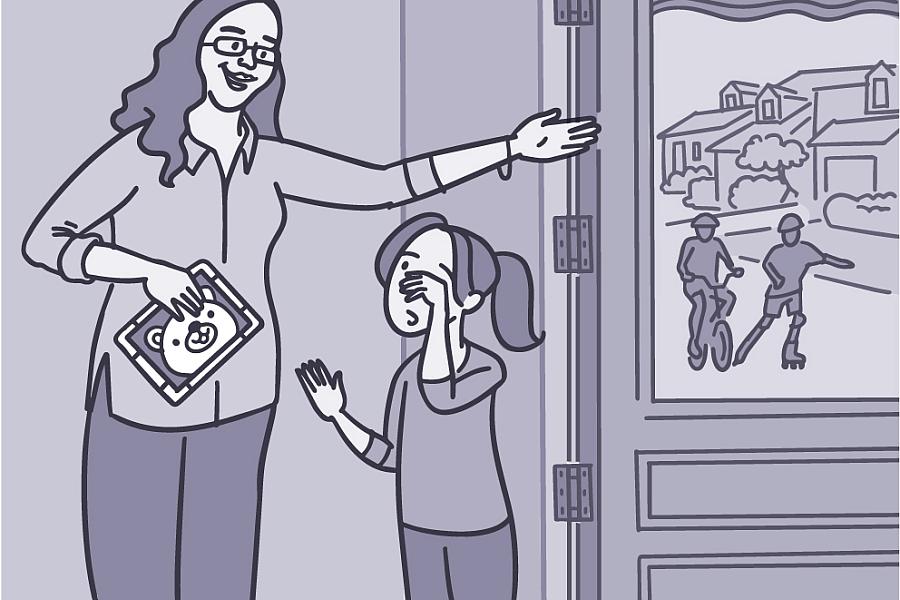A Blurry Worldview
Understanding Myopia

As a child in school, did you ever struggle to see what the teacher wrote on the board? Maybe you could easily read from a book, but things farther away—like highway signs—looked blurry. Blurry distant vision is the main symptom of myopia, a condition that affects about a third of American adults.
If you have myopia, you’ll have trouble seeing things far away, but you’ll be able to see nearby things clearly. This is why myopia is commonly called nearsightedness. Other symptoms of myopia include headaches, eyestrain, and squinting.
Myopia typically begins in childhood. In most cases, the amount of nearsightedness someone has stabilizes by the time they reach adulthood. Some people, however, may have myopia that continues to worsen with age.
“Myopia develops gradually, says Dr. Mary Frances Cotch of NIH’s National Eye Institute. “Children often don’t realize they are myopic because myopia develops gradually and they don’t have any way of knowing that their blurry vision is different from others.”
When you look at an object, the light rays of that object pass through the A clear dome-shaped surface that covers and protects the front of the eye. cornea and the lens of the eye. These bend (refract) the light and focus it on the light-sensitive tissue at the back of the eye (the retina). If you have perfect vision, the rays focus directly on the surface of the retina. In a myopic eye, the eyeball is usually too long from front to back. This causes light rays to focus at a point in front of the retina, rather than directly on its surface. This makes distant objects blurry.
Myopia can also be the result of a cornea that is too curved or a lens that is too thick. For some, myopia may be caused by a combination of these problems.
What causes the eyeball to grow too long isn’t completely known, but NIH-funded researchers are exploring several possibilities. For many people, myopia appears to be inherited, so if you have a parent with myopia, you’re at increased risk for developing it yourself.
Myopia is becoming increasingly common, both in the U.S. and around the world. The problem is especially prominent among school-age children living in urban areas in some Asian countries. In a study published in 2008, NIH experts found that the number of Americans with myopia increased significantly from the 1970s to the early 2000s. The researchers estimated that at least 33% of Americans are nearsighted.
Researchers are looking to see if and how myopia might be related to a person’s sex, age, ethnicity, and environmental exposures—such as sunlight or the amount of time spent doing close-up work. In the past, experts thought that myopia might arise in children who spent too much time indoors reading and writing, which require close-up vision, or from reading in poorly lit rooms. Recent studies, however, suggest that increased myopia in children might instead be related to kids spending less time outdoors. Continued research into how myopia develops will begin to sort out the potential causes and influences.
If distant objects seem out of focus, talk with an eye care professional. He or she can diagnose myopia or other eye problems and recommend options to improve your vision.
NIH Office of Communications and Public Liaison
Building 31, Room 5B52
Bethesda, MD 20892-2094
nihnewsinhealth@od.nih.gov
Tel: 301-451-8224
Editor:
Harrison Wein, Ph.D.
Managing Editor:
Tianna Hicklin, Ph.D.
Illustrator:
Alan Defibaugh
Attention Editors: Reprint our articles and illustrations in your own publication. Our material is not copyrighted. Please acknowledge NIH News in Health as the source and send us a copy.
For more consumer health news and information, visit health.nih.gov.
For wellness toolkits, visit www.nih.gov/wellnesstoolkits.




